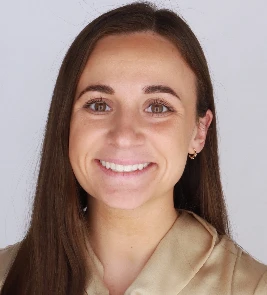3516 - Endobronchial HDR Brachytherapy for Post-Transplant or Wegener's Granulomatosis Associated Bronchial Stenosis: Extended Follow-up of Pulmonary Function, Subsequent Procedures, and Second Malignancy
Presenter(s)

D. Schaar1, U. K. Iheagwara2, A. Groszkiewicz3, B. A. Johnson4, M. Schuchert5, F. Li6, C. J. Houser3, E. Doraisamy2, H. Kim3, S. A. Burton7, and J. A. A. Vargo IV3; 1University of Pittsburgh School of Medicine, Pittsburgh, PA, 2UPMC Hillman Cancer Center, Pittsburgh, PA, 3Department of Radiation Oncology, University of Pittsburgh Medical Center, Pittsburgh, PA, 4UPMC Department of Medicine, Division of Pulmonary Allergy and Critical Medicine, Pittsburgh, PA, 5Department of Thoracic Surgery, University of Pittsburgh Hillman Cancer Center, Pittsburgh, PA, 6Department of Radiation Oncology, UPMC Hillman Cancer Center, University of Pittsburgh School of Medicine, Pittsburgh, PA, 7Department of Radiation Oncology, UPMC Hillman Cancer Center, Pittsburgh, PA
Purpose/Objective(s): Hyperplastic tissue resulting in airway obstruction is a significant complication of lung transplantation and Wegener’s Granulomatosis. The mainstay treatment is interventional bronchoscopy; balloon dilation, stent placement, and laser debridement are among the techniques used. Still, bronchial obstruction remains a significant source of morbidity and mortality. Endobronchial brachytherapy has been implemented for treatment refractory stenotic areas based on limited data. We hypothesize that high dose rate (HDR) brachytherapy using 3Gy x1 fraction is an effective therapeutic regimen for treatment-refractory bronchial stenosis and present our updated data on this approach.
Materials/Methods: Patients who underwent endobronchial HDR Ir-192 brachytherapy from Jan 2016 to Feb 2025 for bronchial stenosis were retrospectively reviewed. Patients were selected for HDR brachytherapy if they had treatment refractory symptomatic re-stenosis. On their day of treatment, patients underwent a flexible bronchoscopy and insertion of a single-lumen brachytherapy catheter. Placement was confirmed in real time by fluoroscopic imaging. Treatment length ranged from 4-6cm. The dose of 3Gy in 1 fraction was prescribed 1cm from the catheter surface. Patients were followed with bronchoscopies and pulmonary function testing (PFTs).
Results: 5 patients were included with median follow-up of 7.4 m (range: 7.2-182.7). All patients had initial clinical & bronchoscopic improvement with brachytherapy. The Wegener’s Granulomatosis patient required 2 additional courses of brachytherapy due to residual granulation tissue found proximally outside of the prior radiation treatment fields. Median time to next endobronchial intervention after brachytherapy was 6.0 m [0.9-160.1]. The median number of interventions pre and post brachytherapy are listed below (Table 1). FEV1 prior to brachytherapy was 43.5% predicted [27-65] and PFT after brachytherapy was 48% predicted [25-72]. The Wegener granulomatosis patient had a balloon dilation procedure induced grade 4 bronchopulmonary hemorrhage 3 months after 3rd brachytherapy treatment, requiring bronchial artery embolization. This patient was subsequently discharged 36 hours after the initial bleed and remained free of stenosis. No patients manifested a second malignancy in the lungs or mediastinum following brachytherapy.
Conclusion: With notable decreases in the frequency of post-brachytherapy interventions, numerical increases in the median FEV1, and no second malignancies, endobronchial HDR brachytherapy delivered as 3Gy x1 fraction proved safe and effective in resolving refractory bronchial stenosis secondary to granulation tissue especially in lung transplant patients.
Abstract 3516 - Table 1| Number of Pre-Brachytherapy Intervention | Number of Post-Brachytherapy Intervention | |||
| Patient | 12-6 months | 6-0 months | 0-6 months | 6-12 months |
| 1 | 9 | 4 | 19 | 12 |
| 2 | 13 | 11 | 3 | 0 |
| 3 | 4 | 4 | 2 | 0 |
| 4 | 2 | 9 | 0 | 0 |
| 5 | 13 | 8 | 1 | 1 |
| Median [range] | 9 [2-13] | 8 [4-11] | 2 [0-19] | 0 [0-12] |
